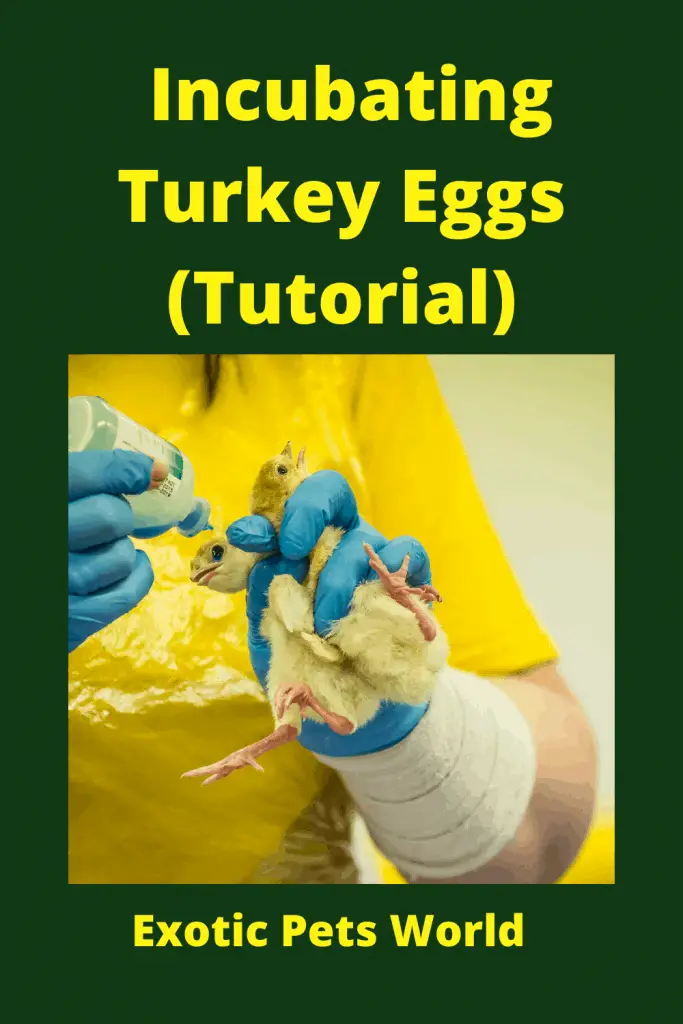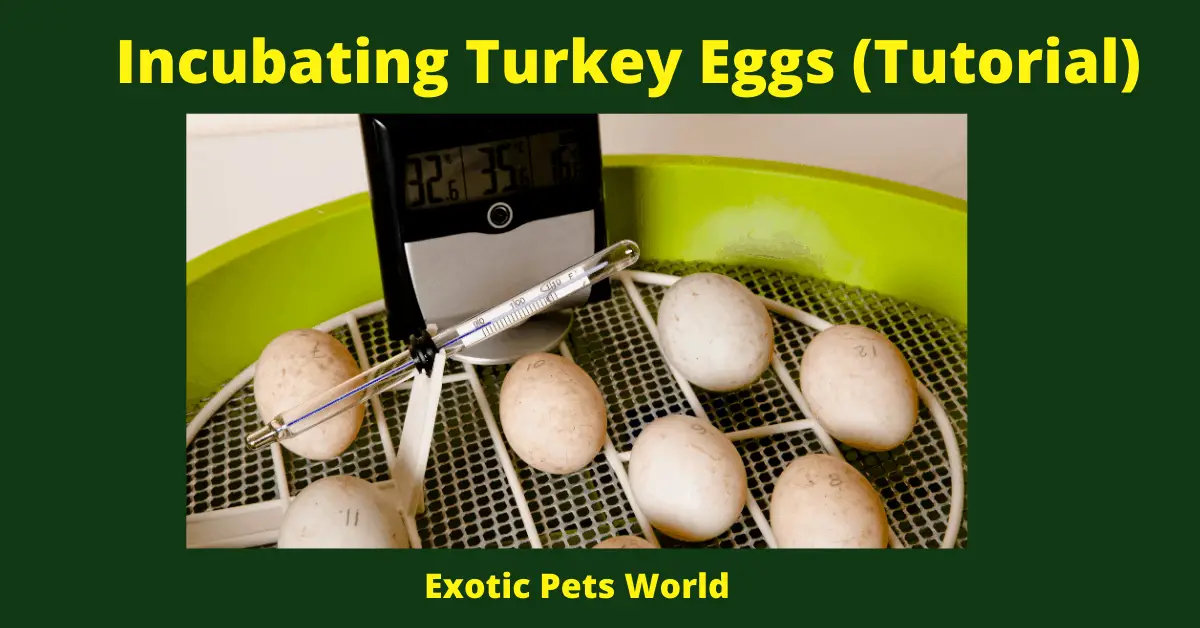Incubating Turkey Eggs. While turkey hens will hatch eggs naturally, artificial incubation has its advantages.
Most turkey hens are poor mothers (though this varies with the breed and the individual) which results in poultry losses. Turkey Egg Incubation will help increase the hatching turkey. It will also help in Breeding Turkeys. To Increase your turkey flocks.
Also, hens that are brooding aren’t laying eggs. If your goal is to produce the most poultry possible during the limited breeding season (March through July), artificial turkey egg incubation keeps your flock’s egg production up and your newly hatched poults safer.
Taking fertile eggs and putting them in an air incubator. Hatching them art proper air temperature, room temperature, and humidity level. Taking turkeys eggs and placing them in incubators. Using Fertile eggs will help accomplish that
How to Incubate Turkey Eggs / At What Temperature Do You Incubate Turkey Eggs?
Setting the correct temperature program at the incubator is the most important factor for successful single-stage incubation. It is also essential that all eggs set in the single-stage incubator are preheated to a homogenous temperature, to encourage embryonic development to start simultaneously in each egg.

Generally, the set point of the incubator temperature is lowered as incubation progresses, since metabolic heat production, and thus the risk of overheating the embryo, increases as the embryo grows. To support optimum embryonic development, the temperature program should follow a temperature pattern that is as close to natural as possible, from 37.5 degrees. How to Incubate Turkey Eggs
during the first two-thirds of incubation and increasing to about 38.1 degrees C during the final phase.
It must be noted that reducing the temperature by 0.5 degrees C from 37.5 degrees C to 37 degrees C will increase the incubation period by 6-8 hours. Egg produced by 33-week old hens hatch better when incubated at a temperature of 37.5 degrees C and thus have a shorter incubation period, while eggs from 54 week old hens hatch better when incubated at the lower temperature of 37 degrees C. It can be checked several times a day.
How Long Does it Take for Turkey Eggs to Hatch in an Incubator?
Embryonic growth is characterized by an increase in mass while the development of the organs continues. The shape of the organs and, rate of growth at a specific time in the different parts of the embryonic body.
Temperature below the optimum incubation temperature of 37.5-37.8 degrees C can result in disproportional growth: some embryonic cells and structures may grow while others do not, which can result in a malformed embryo.

An increase in mass during the growth phase is the result of high metabolic activity and cell proliferation. The fuel for this activity is delivered by the nutrients from the egg and oxygen via the eggshell, with carbon dioxide and metabolic heat produced as by-products of embryonic metabolism. Growth rates decline when the porosity of the eggshell becomes a limiting factor in the supply of sufficient oxygen.
This occurs earlier in eggs from older hens than from younger turkey flocks because the growth rate of embryos from the older flock is higher.
The growth rate and thereby the length of the incubation period depends mainly on temperature and is influenced by flock age and the length of the storage period. Turkey eggs generally hatch at 660-672 hours (27.5-28 days), depending on the breed.
Different Phases of Embryonic Development
The pace of advancement and the imperativeness of the poult rely upon maternal age, while hereditary choice impacts significant physiological frameworks. The improvement of a turkey undeveloped organism is an intricate cycle that can generally be isolated into three stages:
- a period of Cell Separation
2) Growth
3) Maturation.
These stages are perceived through explicit physiological subtleties – and from observational information, we realize that distinctive egg types need explicit brooding conventions.
Can I Incubate Turkey & Chickens Together?
It’s easier doing them independently, yet it very well may be accomplished. The thing you can do is placed the chicken eggs in the hatchery multi-week in the wake of beginning the turkeys. At that point, everybody hatches simultaneously. You will need to monitor both groups if you choose this method. You could end up losing them both.
How Do you Place a Turkey Egg in an Incubator?
To ensure an effective bring forth, you need to carefully screen and change the temperature, moistness, and ventilation of the hatchery and the eggs should be turned on the right timetable.
Temperature
In a hatchery that has a course fan, the temperature should be kept up at 99 degrees Fahrenheit. In a still-air hatchery, add 2 to 3 degrees. In the two styles, measure the temperature as near the eggs as your hardware permits. A far off sensor thermometer is ideal for observing a hatchery.

Humidity
The moistness in the hatchery should be kept up somewhere in the range of 55% and 60% relative stickiness. The advancement of the undeveloped organism depends on the fluid in the egg vanishing over the brooding time frame.
A lot of dampness and the egg whites won’t dry adequately and the creating chick will suffocate.
Too little, and the egg will dry excessively fast. Stickiness can be checked with either a wet-bulb thermometer or a hygrometer. While the wet-bulb thermometer technique is more precise, utilizing it is fairly simple, and it is just very exact. Shop cautiously when purchasing a hygrometer and be certain that its exactness is ensured by the producer.
Ventilation
While it may not appear thus, an eggshell is permeable. Growing poults need oxygen to move through the shell. Once the poult “pips” (begins getting through the shell), outside air in the hatchery is much more critical. Be certain that your hatchery has movable ventilation, permitting outside air in and removing old air.
Ventilation control is a difficult exercise. Expanding ventilation will, by and large, diminish moistness and temperature. You need to ensure your air circulation occurs, yet at a rate that permits you to keep up temperature and humidity.
The nature of the air outside the hatchery is indispensable too. On the off chance that the hatchery is in a shut room, the hatchery is acquiring a similar lifeless air it just vented out. Ensure that the air in the room where the hatchery is found is vented properly.
Egg Turning
Turkey eggs hatch in 28 days. Eggs need to be placed in the incubator with the large end slightly elevated. Then, the egg needs to be turned on its axis five to seven times per day. Place two different markings (an “X” and and “O” for example) on opposite sides of the egg.
This makes it easy to make sure all eggs have been turned properly. Handle the eggs carefully in the very early days of the incubation. The embryos developing circulation system is very fragile in the early days.
The eggs should not be turned in the last three days of incubation.
Monitoring
While your eggs are developing, you can check their advancement. “Candling” an egg alludes to holding the egg up to a solid light source in a generally dull room. This permits you to see the undeveloped organism’s as it grows.
Eggs that are not growing appropriately ought to be discarded to forestall the defilement of the practical eggs.

Hatch Day
in the last few days, ventilation and humidity should be increased. The day your poults hatch out and bring out a lot of fulfillment.
There’s a compelling impulse to help, however, that is for the most part an error. To not help your poults hatch out of their eggs
They need to struggle out, also you do not need to disturb environment for the rest of the eggs.
Mugginess is critical now, and when you open the hatchery, the stickiness will plunge.
If you help one poult break out and about, you’re probably going to make a few others become bound in shells because of change in environment.
Fowls were breaking out of eggshells sometime before man came along, and likely will be long after we’re gone. Disregard them and simply watch. If all works out as expected, you’ll have heaps of cheerful, chirping poults, then be prepared to move them to the brooder.
How Can You Tell if Turkey Eggs are Fertile?
You cannot eyeball an egg to identify it as either fertilized or unfertilized. The eggshell is merely an armored casing, protecting what is inside. It does not grow harder, become rounder, or change color if a chick is growing within. You will need to candle them.
Do Eggs Move Before They, Hatch?
- Throughout this stage, the chick starts to maneuver itself into position for hatching. The egg tooth is moving towards the position it needs to be in to start breaking through the membrane and shell during the final stage of the hatch.
Why are My Turkey Eggs Not Hatching?
The problem is usually caused by either
1) poor ventilation
2) improper humidity.
Another reason for mortality during hatching is improper humidity adjustment. The deaths can be produced from too much humidity during the entire incubation period or from too little humidity during the hatching period.
Conclusion:
It’s concluded that turkey eggs can be incubated at 37.5 degrees C to 38.1 degrees C. While incubating, you should provide proper ventilation, humidity, temperature, and turning of eggs. Different embryonic development of embryos will take place in a specific condition. You can’t incubate chick eggs and turkey eggs together, because of different incubation times.
